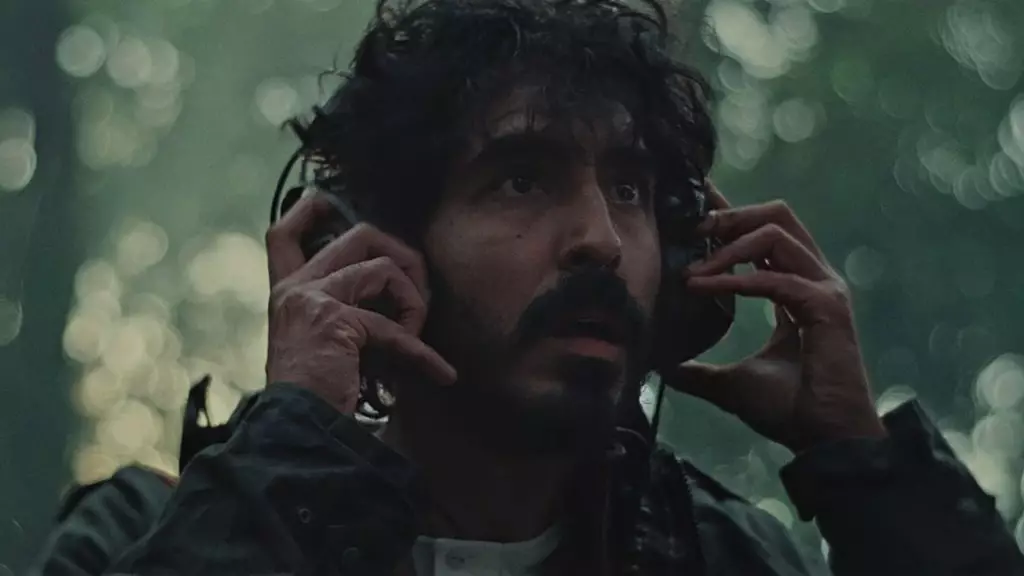In a captivating blend of Celtic folklore and psychological exploration, Bryn Chaney’s debut feature film, Rabbit Trap, emerges as a poignant exploration of artistry and the lurking specters of the subconscious. Set against the backdrop of the tranquil yet eerie Welsh countryside in 1973, the narrative follows the lives of Darcy and Daphne, a seemingly idyllic musical duo portrayed by Dev Patel and Rosy McEwen. Their retreat to a remote cabin for creative rejuvenation takes a sinister turn when Darcy stumbles upon a sound that beckons ancient, mystical forces, altering the course of their lives and art.
What sets Rabbit Trap apart is its innovative utilization of sound—not merely as background noise but as a character in its own right. Chaney’s meticulous attention to audio immerses viewers in an auditory landscape that oscillates between enchanting and unsettling. The meticulous field recordings, encompassing natural sounds like dripping water and rustling leaves, evoke a palpable connection between the characters and their environment, inviting viewers to experience the world through their ears. This sentiment is articulated by Darcy’s belief that “sound is a ghost… and your body is the house it haunts,” an idea that resonates throughout the film’s narrative layers.
The symbiotic relationship between sound and emotion is accentuated through composer Lucrecia Dalt’s evocative score and Graham Reznick’s sound design. As Daphne engages in her artistic process, the sounds amplify her emotional turmoil, transforming every note and rustle into a conduit for her creative energy and existential dread. Chaney crafts a narrative where sound serves as both muse and menace, highlighting the complexity of the human experience and its many hidden depths.
At the heart of Rabbit Trap is an intense exploration of the relationship between Darcy and Daphne. While they collectively strive for artistic expression, an undercurrent of tension lies in Darcy’s personal struggles, particularly his bouts with sleep paralysis. The film’s hauntingly beautiful moments intertwine with the weight of unspoken thoughts between them, significantly illuminating the darker corners of human connection. Through Daphne’s recordings of Darcy’s sleep-talking, the film weaves in layers of communication that words often fail to capture, effectively emphasizing the precarious nature of their bond.
Patel and McEwen deliver nuanced performances, hinting at the complexity of their characters’ interactions. The intimacy of their scenes, particularly one spirited by ethereal music, feels like a mesmerizing dream, underscoring the disorientation that accompanies both love and creativity. Yet, as Daphne is drawn deeper into the allure of their newfound artistic breakthrough, the palpable tension between light and dark surfaces, challenging their relationship as personal demons begin to emerge.
As the narrative progresses, the introduction of the enigmatic child, played by Jade Croot, magnifies the emotional landscape of Rabbit Trap. The child’s fascination with the couple’s music adds a layer of innocence juxtaposed against the backdrop of creeping dread. Through his teachings of local folklore and insights into rabbit hunting, the boy aids in creeping the story into realms of both curiosity and danger. This unexpected dynamic subtly reflects the shifting power balance between the couple and the world around them while introducing themes of parental instinct and supernatural influence.
Croot’s portrayal encapsulates a whirlwind of emotions—innocence intertwined with an almost preternatural wisdom. The child’s interactions provoke a protective instinct in Darcy and Daphne, compelling them to confront the darkness within themselves. The trio’s chemistry fosters a strange yet compelling synergy, as the story peels away layers of trauma, ultimately questioning the survival of creativity amidst despair.
Rabbit Trap emerges as a stunning cinematic debut from Bryn Chaney, offering more than just a narrative about sound and folklore. It delves into the emotional intricacies of human relationships, the struggle for artistic expression, and the haunting shadows that dwell within us. Through dynamic performances, intricate sound design, and a rich tapestry of themes, the film captivates audiences, evoking both beauty and anxiety in equal measure. As Chaney carves out a space for himself in the cinematic landscape, Rabbit Trap stands as a testament to the power of storytelling, creating a haunting experience that lingers long after the credits roll.


Leave a Reply